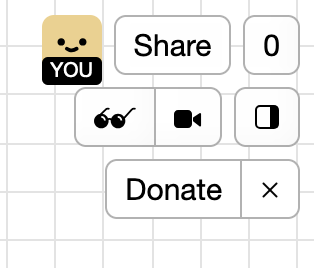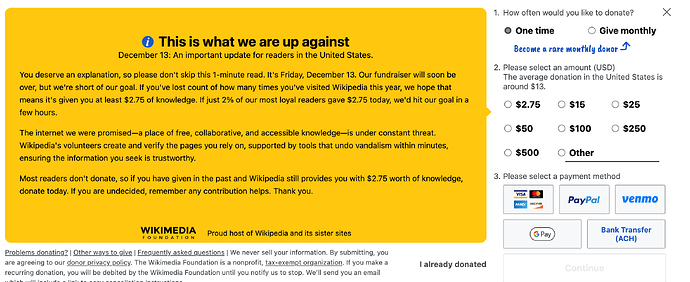I pay for kinopio and I think the value I get from it exceeds what I pay and I love the idea of supporting independent software so given the opportunity I would contribute more.
That said, I think asking for donations while having a paid service is tricky because it feels like on the one hand it’s a business and on the other it’s a charity, it’s contradictory. A user doesn’t know how to feel. I don’t think that contradiction is fundamental, though, it can be overcome, but it requires some finesse.
A good example of the finesse is deck.blue, a Bluesky client (Tweetdeck but for Bluesky) made by a solo developer. Rather than sell traditional subscriptions, the project has a Patreon through which people can support the project and at the same time they unlock new features… which is actually just the traditional software-as-a-service subscription model but it has a very different vibe. They’re now approaching 1,000 paid subscribers.
As for asking for pure donations: my feeling is that donation goals and transparency are very important for driving donations. Wikipedia[1] and archive.org have so much credibility and brand power that they can do basically whatever they want, but for smaller enterprises, it needs to be more considered.
I remember when reddit did their “oh god we need money” gambit: each day there was a progress bar indicating how much money reddit needed to receive that day to cover their bills, and that was quite compelling, people would donate to move the bar. I think a daily goal wouldn’t work for something smaller than reddit, but a monthly/yearly donation drive with a defined goal would be a good version of that. Asking people to donate because you’re 80% of the way towards raising the amount required to fund the service for another year is very different than just asking for a donation without any context.
Anyway, in conclusion, I would donate if I saw a donate banner, but I think I’m probably an outlier. I think if I were Mr. Kinopio and I wanted to build a financially sustainable product where donations are a meaningful part of what makes it sustainable, I’d probably go for the Patreon-style not-a-business model. As a person who makes things myself, the idea of using Patreon for subscriptions is, like, it boggles the mind, why use something janky like Patreon when I could use something good like Stripe? But it’s that janky grass-roots vibe that resonates with people.
I guess it’s like: if I went to a pricing page on a product website, I’d choose the lowest cost plan that meets my needs. If I went to a Patreon, I’d pick the most expensive option I could afford… even if it was the same product.
[1] Wikipedia is actually a bad example to follow because they exist in this weird space where the money they raise doesn’t really go towards funding Wikipedia the service we all know and love, it goes towards funding Wikipedia’s mission which is a much more complicated (and controversial) topic. The cost of Wikipedia’s servers is, like, 2% of their budget, it’s why they talk about a “goal” in their fundraising message but never actually define that goal, because people would question the numbers involved. Same with archive.org, that spends a lot of money on the litigation they oopsied their way into. A smaller enterprise has a lot more room to do things that get users much closer to seeing how every dollar actually matters.
![]()

